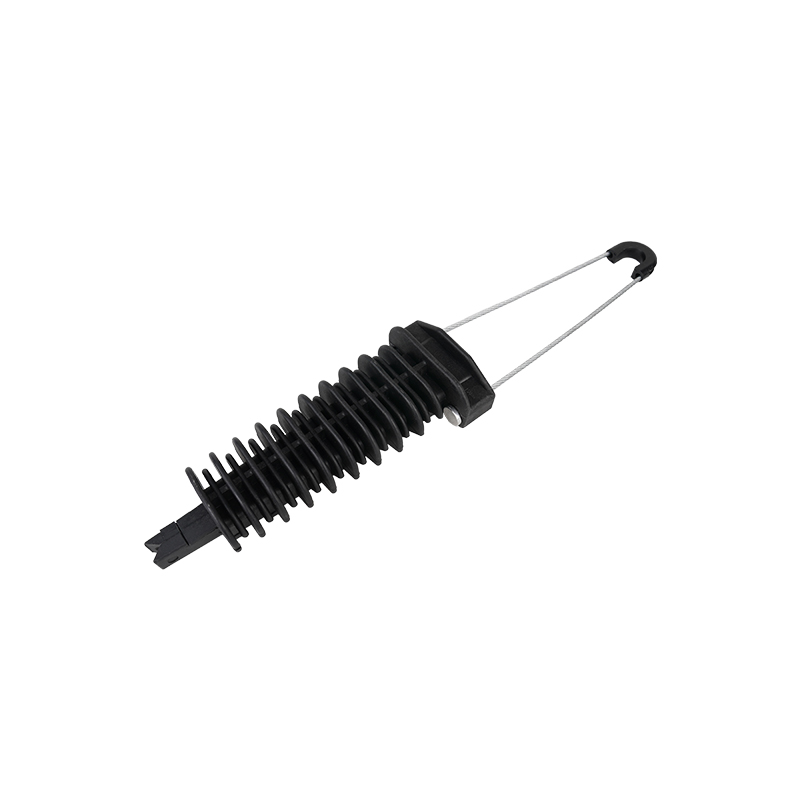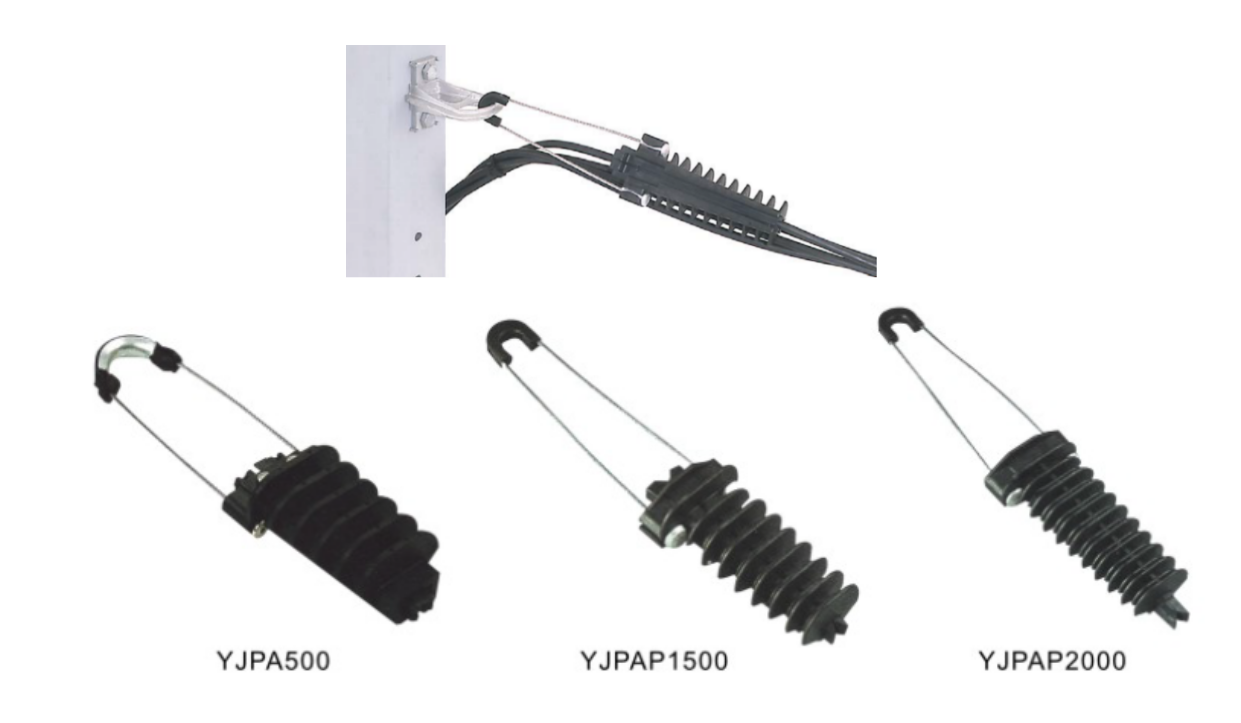To develop reliable and future-proof telecom networks it is essential that the selected anchoring and suspension
solutions to be qualified for the type of network on which they will be installed. The mechanical connection
between a clamp and the cable to roll-out is an important issue for overhead networks. A suitable aerial cable
clamp must be able to ensure an effective cable grip, without damaging the sheath of the cable or having any
impact whatsoever on the quality of the transmitted optical signal. To ensure the compatibility between an anchor
or suspension clamp and the outdoor cable, three main criteria are to be considered:
☆ the cable’s structure
☆ the cable’s diametere
☆ the span length of the network to roll-out: the longer the span, the longer the clamp’s bail. This will enable
to avoid any contact between the clamp’s bail and other elements and most importantly, to respect the cable’s
bend radius when this one is used in configurations consisting of creating a small loop above or underneath
the pole’s top.
For telecommunications feeder networks, characterised by greater span lengths, helical dead-ends offer a better
cable grip thanks to their large contact surface with the cable.
The compatibility between dead-ending solutions and cables to deploy is checked by carrying out the following
qualification tests:
☆ Tensile test at the short-term tensile load of the cable (Maximum Allowable Tension) according to EN 60794-1-2
standard – modified Method E1, involving a couple of anchoring devices on a cable length greater than 1 meter.
The compatibility between the telecom anchor clamp and the aerial cable is established when there is no slippage
of the cable inside the anchoring clamps, no deterioration of the cable, nor deterioration of the signal (attenuation
less than 0.1dB) .
☆ Galopping test for anchor clamps according to EN 60794-1-2 standard – Method E1. This consists into applying 10
undulations to cables with a smaller or equal diameter to 6mm (drops), 3 undulations to cables with a greater diameter
than 6 mm (distribution and feeder cables) and a measurement of optical losses for 300 hours. A test is considered
conclusive when registered optical losses are less than 0.1 dB throughout the test.
Solutions for overhead round self-supporting cable
Depending on the part of the network to be rolled-out, various technological solutions are available for deploying
an overhead telecom network:
For last mile access network: :
There are many different models of anchor clamps for ADSS cable. Conical clamping dead-endings such as those
included in the JYPA range for example are intended for spans up to 70 meters. These anchor clamps are designed
with more enveloping wedges so to fit perfectly onto the cable’s shape and to preserve its functional characteristics
in case of overload. As for wedge clamps, they enable simple or double dead-ending of round drops with small
diameters on poles or walls. Mandrel devices are another fastening solution for aerial drop roll-outs. Especially
designed for the dead-ending of drops with flexible and insulating outer sheath, these anchor clamps present a
mandrel body in which cable can be coiled and self-tighten.
Telenco FTTH drop clamps
For distribution network:
Anchor clamps included in the JYPA ADSS range are overhead cable fastening solutions enabling to start, realise
dead-ending applications all along and to terminate telecom distribution networks where spans do not exceed 90
meters. Offering an effective cable grip, JYPA ADSS clamps do not exert any bending radius stress on the cable.
Another solution for effectively anchoring round cables on distribution networks is to opt for helical dead-ends using
the preformed technology. GSDE spirals install only on telecommunications networks, where spans do not exceed
90 meters.
For feeder network:
For greater spans, such as for those commonly met on feeder networks, dead-ending applications must be performed
with fastening devices engineered to resist to higher tensile strengths. Designed with armor rods, helical dead-ends
from JYPA range preserve telecom cables deployed on spans up to 180 meters from bending, compression or abrasion.
Post time: Mar-14-2022


